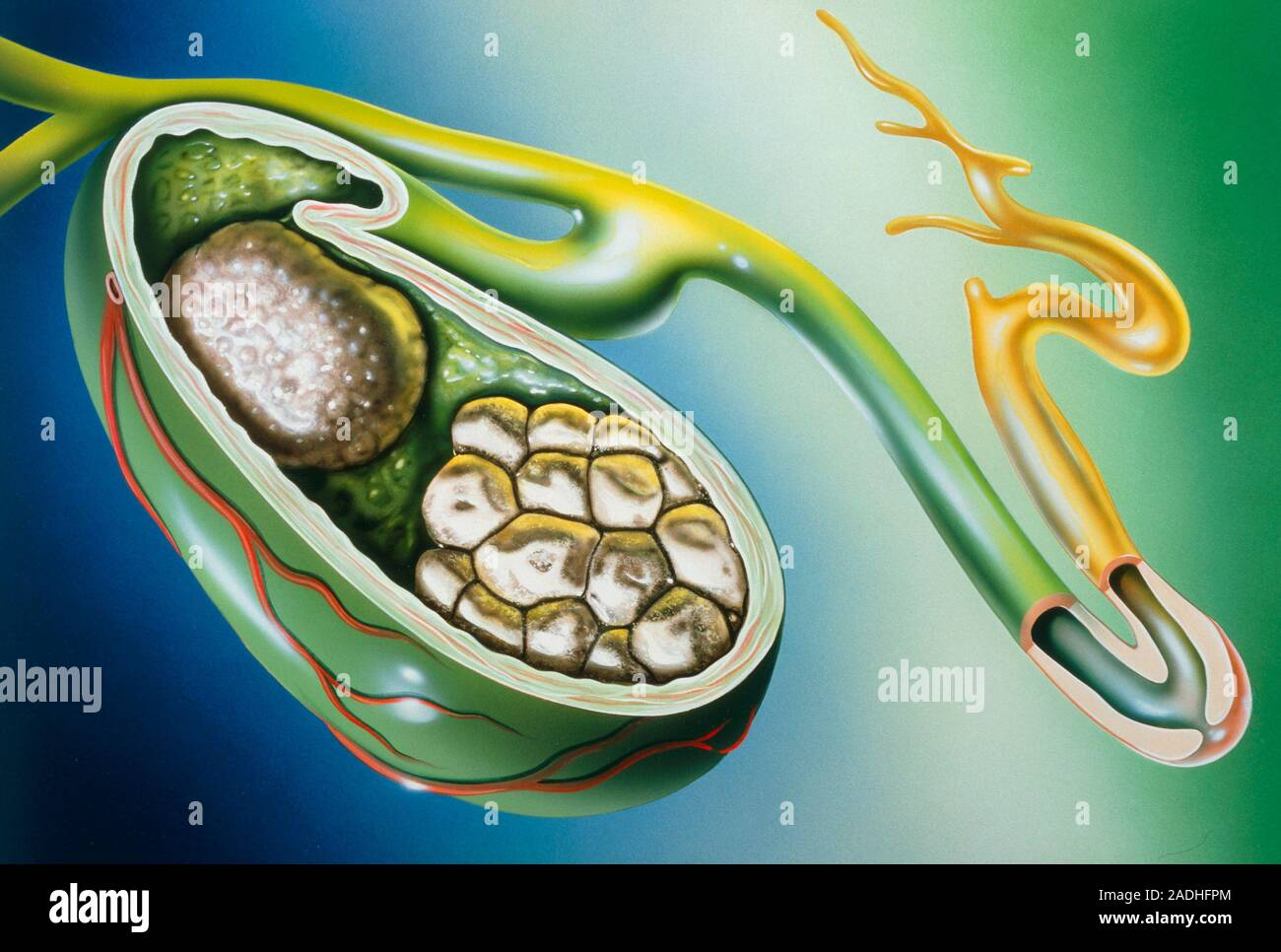Bile imbalance is increasingly recognized as a significant factor contributing to liver cancer, particularly hepatocellular carcinoma (HCC), which is the most prevalent form of liver malignancy. Recent studies highlight the importance of bile acid metabolism and how its disruption can lead to severe liver issues, including the development of cancerous cells. A critical mechanism involved is the FXR activation, which normally regulates bile production, but can be inhibited by the YAP signaling pathway. This inhibition results in an overload of bile acids that cause liver inflammation and fibrosis—a precursor to HCC. Understanding this complex interplay between bile imbalances and liver cancer opens new avenues for potential therapeutic interventions aimed at restoring healthy bile acid levels and preventing disease progression.
Disruption in the balance of bile acids may also be referred to as bile dysregulation, which poses serious health risks, particularly in relation to liver diseases. The liver’s ability to process and excrete bile is essential for maintaining metabolic equilibrium. When bile acid production is compromised, it can enhance the risk of developing liver cancer, specifically hepatocellular carcinoma. Key molecular players like the FXR receptor and YAP protein significantly influence bile acid metabolism, highlighting their critical roles in regulating liver health. Addressing bile acid imbalances through targeted treatments could ultimately improve outcomes for individuals suffering from severe liver conditions.
Understanding Bile Imbalance and Liver Cancer
Bile imbalance is increasingly recognized as a significant factor in the development of liver cancer, particularly hepatocellular carcinoma (HCC). Bile acids play a critical role in fat digestion and metabolism, but when their production and regulation are disrupted, it can lead to severe liver damage. The liver’s failure to maintain proper bile acid levels not only impairs digestion but also creates an environment conducive to malignancies. Studies have shown that when bile acids accumulate due to imbalances, they can provoke inflammatory responses and contribute to carcinogenesis, highlighting the necessity of understanding this relationship.
Research has indicated that molecular pathways involved in bile acid metabolism are directly linked to liver tumorigenesis. For instance, the activation of the FXR (Farnesoid X receptor) is vital to maintaining bile homeostasis. However, abnormalities in the signaling pathways, such as those involving YAP (Yes-associated protein), can inhibit FXR function and disrupt bile regulation, thus amplifying the risk of developing liver cancer. This complex interplay between bile acid signaling and tumor development underscores the importance of further investigations into bile dynamics to devise effective cancer prevention strategies.
The Role of YAP Signaling Pathway in Cancer Development
The YAP signaling pathway has emerged as a crucial player in various cancers, including liver cancer. Traditionally known for promoting cell growth, recent findings reveal YAP’s unexpected role as a repressor of bile acid metabolism. By inhibiting FXR, YAP disrupts the delicate balance of bile production, leading to an overproduction of bile acids that accumulate in liver tissues. This accumulation is detrimental, as it contributes to fibrosis, inflammation, and ultimately, HCC. Understanding the dual role of YAP not only enhances our comprehension of liver cancer biology but also opens avenues for novel therapeutic strategies.
Therapeutic interventions targeting the YAP signaling pathway present promising implications for oncologists. By enhancing FXR activity or inhibiting YAP’s repressive effects, researchers could potentially restore bile acid balance and combat liver cancer progression. This approach exemplifies the concept of targeted therapy, where molecular pathways are manipulated to achieve favorable outcomes. As the research progresses, it becomes increasingly evident that addressing YAP’s function within bile acid metabolism could provide valuable insights into both preventive and therapeutic measures against liver cancer.
Exploring FXR Activation for Treatment
FXR activation is receiving significant attention in the field of liver cancer research due to its pivotal role in regulating bile acid homeostasis. As a nuclear receptor, FXR is essential for maintaining bile acid levels and preventing the adverse effects associated with bile imbalance, such as inflammation and fibrosis. Recent studies have shown that activating FXR can mitigate liver damage and inhibit cancer progression by restoring the normal bile acid signaling pathway. This promising avenue highlights the potential for pharmacological agents that can specifically target FXR to provide therapeutic benefits for patients at risk of liver cancer.
Moreover, enhancing FXR’s function could represent a multitargeted strategy to combat not just bile imbalance but also its downstream effects in cancer development. By stimulating FXR, researchers can not only decrease bile acid levels but also promote bile acid excretion through proteins such as BSEP (bile salt export pump). This could lead to a decrease in inflammatory responses and ultimately lower the incidence of hepatocellular carcinoma. As exploration in this area continues, the integration of FXR activation into therapeutic regimens could transform the treatment landscape for liver cancer patients.
Bile Acid Metabolism: Implications for Liver Health
Bile acid metabolism is critical for liver health, serving various functions beyond mere digestion of fats. Bile acids act as signaling molecules, influencing metabolic pathways that can impact overall liver function. Disruptions in this delicate balance not only affect digestion but can also lead to serious conditions such as hepatic steatosis, liver inflammation, and increased susceptibility to liver cancer. Emerging evidence suggests that maintaining proper bile acid levels through metabolic regulation is essential for protecting against liver diseases, emphasizing the need for comprehensive understanding and management of bile acid metabolism.
Additionally, the relationship between bile acid composition and the gut microbiome plays a significant role in liver health. Alterations in bile acid metabolism can influence the gut microbiota, potentially leading to dysbiosis, which has been linked to liver pathologies. Therapeutic strategies aimed at restoring bile acid levels or improving gut microbiome health could provide dual benefits for liver protection and overall metabolic homeostasis. In conclusion, maintaining the balance of bile acids is vital not just for digestion but for promoting liver health and preventing malignancies.
Molecular Mechanisms Behind Bile Imbalance
Understanding the molecular mechanisms that underlie bile imbalance is crucial for developing effective treatments for liver diseases, including liver cancer. Research has identified several key pathways involved in regulating bile acid synthesis, including the FXR signaling pathway and the Hippo/YAP pathway. These pathways interact to ensure normal bile production and prevent biliary disorders. When these mechanisms become impaired, either through genetic mutations or environmental factors, it can lead to an excess of bile acids in the liver, which is detrimental and can result in the promotion of liver cancer.
The interplay between these pathways illustrates how disruptions in one molecular mechanism can have cascading effects on liver health. For example, the dysregulation of the FXR pathway can impact the efficacy of YAP, leading to a shift in bile acid metabolism towards a carcinogenic profile. This highlights the importance of targeting multiple molecular pathways for therapeutic intervention. By addressing bile imbalance at a molecular level, researchers can advance the development of targeted therapies that not only correct bile acid levels but also mitigate inflammation and other risk factors associated with liver cancer.
Preventing Liver Damage Through Diet and Lifestyle
The prevention of liver damage is increasingly being recognized as an essential factor in reducing the risk of liver cancer. Diet and lifestyle choices significantly influence bile acid metabolism and overall liver health. A diet rich in fiber, antioxidants, and healthy fats can support the liver’s abilities to regulate bile production effectively. Moreover, limiting alcohol consumption and avoiding exposure to hepatotoxic substances can further protect against bile imbalance and subsequent liver injuries. Public health initiatives aimed at promoting healthy dietary habits can play a critical role in reducing the burden of liver diseases.
Additionally, regular physical activity has been shown to enhance metabolic processes associated with bile acid regulation. Exercise can improve liver function by promoting better lipid metabolism and reducing visceral fat, which is a known risk factor for liver disease. Implementing lifestyle changes that include consistent exercise regimens can effectively lower the risk of hepatocellular carcinoma. Therefore, combining dietary recommendations with active living can fortify liver health and act as a formidable strategy against liver cancer.
Research Developments in Hepatocellular Carcinoma Prevention
Recent research developments have provided new insights into the prevention and treatment of hepatocellular carcinoma (HCC). By focusing on the molecular underpinnings of liver cancer, researchers are identifying specific pathways and mechanisms that contribute to its progression. The relationship between bile imbalance and HCC has led to the discovery of potential biomarkers and therapeutic targets that could revolutionize early diagnosis and intervention strategies. Prominent studies are looking into ways to enhance FXR activation and alleviate YAP’s suppressive role on bile metabolism as promising preventative measures.
Furthermore, ongoing clinical trials are evaluating the efficacy of drugs that target key molecular pathways involved in bile homeostasis. These trials are crucial as they could pave the way for groundbreaking treatments that mitigate the risks associated with bile imbalance. By continuing research efforts in this area, the medical community can work towards establishing comprehensive strategies for preventing HCC, ultimately aiming to improve patient outcomes and reduce liver cancer incidence globally.
The Future of Liver Cancer Research
The future of liver cancer research is bright, with innovative approaches poised to transform our understanding and treatment of hepatocellular carcinoma (HCC). The ongoing exploration of bile acid metabolism and its links to liver cancer underscores the importance of interdisciplinary research that combines molecular biology, genetics, and clinical practices. As researchers delve deeper into the intricate networks that regulate bile acids, signaling pathways such as FXR activation and YAP modulation will be pivotal to developing refined therapeutic solutions.
Moreover, as advancements in technology allow for more precise modeling and analysis, researchers can illuminate the pathological processes leading to liver cancer. By harnessing emerging technologies such as CRISPR and gene editing, scientists are equipped to explore the genetic factors contributing to bile imbalance and HCC. These strides are not just improving our immediate understanding but are also laying the groundwork for innovative public health strategies aimed at reducing the burden of liver disease. In summary, the confluence of research, technology, and clinical practice will shape the future of liver cancer outcomes.
Frequently Asked Questions
What is bile imbalance and how is it related to liver cancer?
Bile imbalance refers to the disruption in the production and regulation of bile acids, which are crucial for fat digestion and metabolic processes. In liver cancer, particularly hepatocellular carcinoma (HCC), this imbalance can lead to increased bile acid levels, causing liver inflammation and fibrosis. Research has shown that the molecular switch involving YAP and FXR plays a significant role in regulating this balance, and its disruption can trigger the progression toward liver cancer.
How does bile acid metabolism affect the development of hepatocellular carcinoma?
Bile acid metabolism is intricately tied to liver health, and an imbalance can lead to conditions like hepatocellular carcinoma (HCC). When bile acids accumulate due to impaired metabolism, they can create an inflammatory environment and promote fibrosis in the liver. The findings indicate that YAP signaling pathway alterations impact FXR activation, disrupting bile acid homeostasis, which is crucial in preventing liver cancer development.
What role does FXR activation play in preventing bile imbalance and liver cancer?
FXR (Farnesoid X receptor) activation is essential for maintaining bile acid balance within the liver. It regulates bile acid synthesis and excretion, preventing their accumulation which can lead to liver inflammation and cancer. Enhancing FXR function could therefore help correct bile imbalance and potentially halt the progression towards liver cancer, making it a promising target for therapeutic interventions.
Can targeted therapies modulate bile acid metabolism to prevent liver cancer?
Yes, targeting bile acid metabolism may offer a novel therapeutic strategy for preventing liver cancer. By enhancing FXR activation or inhibiting YAP’s repressive function, therapies can help restore bile acid balance. This approach has shown promise in experimental models, reducing liver damage and the risk of cancer progression.
What research advancements have been made in the understanding of bile imbalance and liver cancer?
Recent studies have identified crucial pathways, like the YAP signaling pathway and FXR activation, that play pivotal roles in bile imbalance and liver cancer development. These discoveries pave the way for innovative treatment strategies aimed at restoring bile acid metabolism and combating diseases like hepatocellular carcinoma through pharmacological means.
| Key Point | Details |
|---|---|
| Bile Imbalance | Disruption in bile acid production can trigger liver diseases including liver cancer. |
| Molecular Switch Identified | YAP, a key regulator, plays a role as a repressor of bile acid metabolism, impacting liver health. |
| Role of FXR | FXR is vital for maintaining bile acid balance and its inhibition by YAP leads to excess bile acids and liver complications. |
| Potential Treatments | Enhancing FXR function or promoting bile acid excretion may offer new avenues for liver cancer therapy. |
| Research Support | Study supported by the National Institutes of Health and the National Cancer Institute. |
Summary
Bile imbalance is a critical health issue linked to liver diseases such as hepatocellular carcinoma (HCC), the most prevalent type of liver cancer. Recent research has uncovered a key molecular mechanism involving YAP and FXR that disrupts bile acid homeostasis, promoting cancer progression. Addressing bile imbalance through targeted therapies may represent a promising approach to mitigate the risks of liver cancer and improve patient outcomes.




